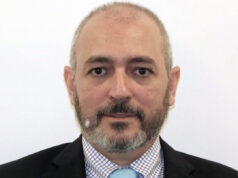INSIGHT by Fabian Scholda, researcher at the Competence Center for Nonprofit Organizations and Social Entrepreneurship at WU (Vienna University of Economics and Business)
| Anyone working even remotely with topics related to sustainability has heard and very likely worked with the United Nation’s Sustainable Development Goals (SDGs). The colourful seventeen tiles not only make their appearance in several presentations and reports linking to sustainability related topics but can also be found on the websites of most large companies. Needless to say that the SDGs have been established as perhaps the most well known indicator for sustainability. They provide a useful basis for demands by institutions lobbying for sustainability of any kind (be that ecological, economical or social) and a handy framework for non-financial reporting.
On their successful rise to fame SDGs have also found their way into the world of sustainable finance and particularly the world of impact investing. FASE, a German intermediary and matchmaker between impact investors and social entrepreneurs, advertises the SDGs each of the presented investable projects contributes to.
Where otherwise it would have been much more difficult to communicate a complex impact model of a project to potential investors, the Sustainable Development Goals do not only give FASE a tool to clarify a projects field of impact but also come with the external credibility borrowed from the UN.
And this is perhaps the strongest point arguing in favour of the SDGs being a part of the solution in our endeavour towards a more sustainable society. More or less since impact investing first became a phenomenon in the world of finance, investors have demanded standardized frameworks to measure and report the social or ecological impact achieved by projects invested in. The lack of such a framework has been one of the strongest barriers keeping potential investors away from impactful and sustainable investments. The Sustainable Development Goals offer precisely that – a standardised framework to report an investment’s contribution to achieving the 17 goals set by the United Nations. Organisations like the German Development Bank (DEG) have harnessed this potential and designed the Development Effectiveness Rating (DERa©), the impact rating model used by DEG and others to evaluate the impact of their investments, to work in alignment with the Sustainable Development Goals.
Examples like DERa©are tempting proof supporting the claim that the SDGs provide a great framework to measure the impact of impactful and sustainable investments and help impact oriented investors overcome barriers they have struggled with for the past decades. Yet when we take a step back, outside of all the noise and all the different applications, we quickly realize what they really are: goals. In all their colourful appearance they are nothing more – or less – than objectives. Although on the UN’s very own website they are described as a “blueprint” they are in fact somewhat vague and mostly qualitative sub-goals to be met in order to “achieve a better and more sustainable future for all”. This means if a project contributes to one of the SDGs it contributes to creating a better and more sustainable future for all. In this they may offer a blueprint that may help with the design of measuring tools, such as DERa©. What the SDGs do not offer is a ready to use framework to measure the extent a project contributes to the overall goal or one of the 17 sub-goals. And this is where the core of the problem lies.
It is one thing to claim that a project or an investment contributes to a certain SDG. To prove how effectively it does that, is a lot more complex and essentially leads back to the problem of how to measure impact in the first place. So far so good – this may limit the extent to which the SDGs can be called a solution, but it does not make them part of the problem yet. The problem side becomes apparent when looking at how companies use the SDGs in the reporting and communication of their impact. Concepts like DERa©are still an exception. Many organisations apply the SDGs similar to FASE by pointing out which SDGs their activity contributes to.
We rarely see an explanation why certain SDGs are not positively contributed to, nor at what cost the positive contribution to the few mentioned goals is generated.
Energy producers, relying largely on fossil oil and gas, like the Austrian OMV, may rightfully argue that they strongly contribute to SDG number eight (Decent Work and Economic Growth). What they would not mention is that in doing so they actively work against the achievement of SDGs seven (Affordable and Clean Energy), twelve (Responsible Consumption and Production), thirteen (Climate Action) or fourteen (Wildlife Below Water).
The problem intensifies, when a well-versed marketer at one of these companies argues that by reducing the company’s CO²-emission produced by 60% they do contribute positively to all the above, ignoring, that even the remaining 40% CO² emissions still represent a negative impact. The very fact that a company is based on fossilenergy, basically rules out that this company will ever be fully sustainable, without radically changing its business model. And yet, the use of the SDGs in their communication and non-financial reporting allow a company like OMV to draw on the UN’s credibility when arguing that their operations contribute to a sustainable society.
What does all this mean for investors? The Sustainable Development Goals are an opportunity no doubt. But make no mistake. SDGs are an opportunity when it comes to defining one’s goals on the one hand and to communicate impact more simply and more clearly on the other. At the same time they are a threat in that they allow organisations with a negative net impact, to focus their communication and their non-financial reporting on the parts of their activity where they do not have a negative impact.
The SDGs as a framework and a set of goals represent a step in the right direction. But they are not a guarantee for impact or sustainability and do not relieve sustainability driven investors of their responsibility to ensure the impact of their investments.
| brief bio








